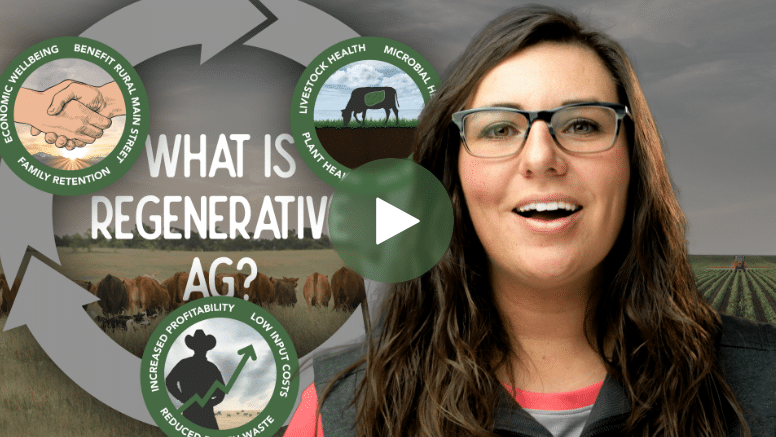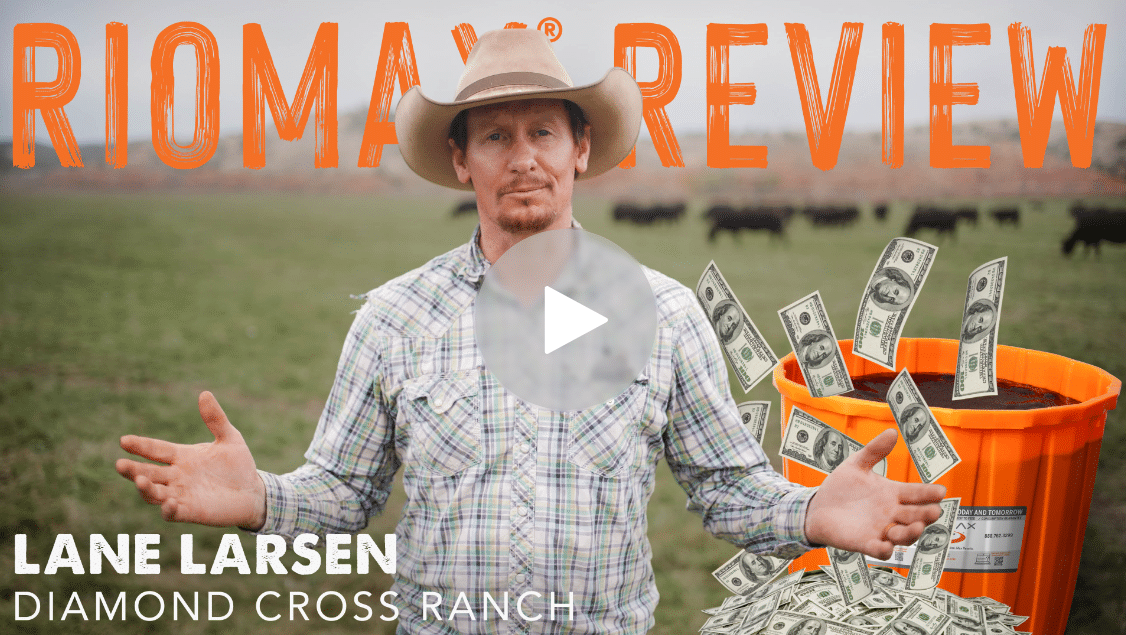Last updated on December 12th, 2023 at 11:22 am
A Healthy Ecosystem the Diamond Cross Way
Success can be measured in more ways than money
MEET Lane Larsen from the Diamond Cross Ranch
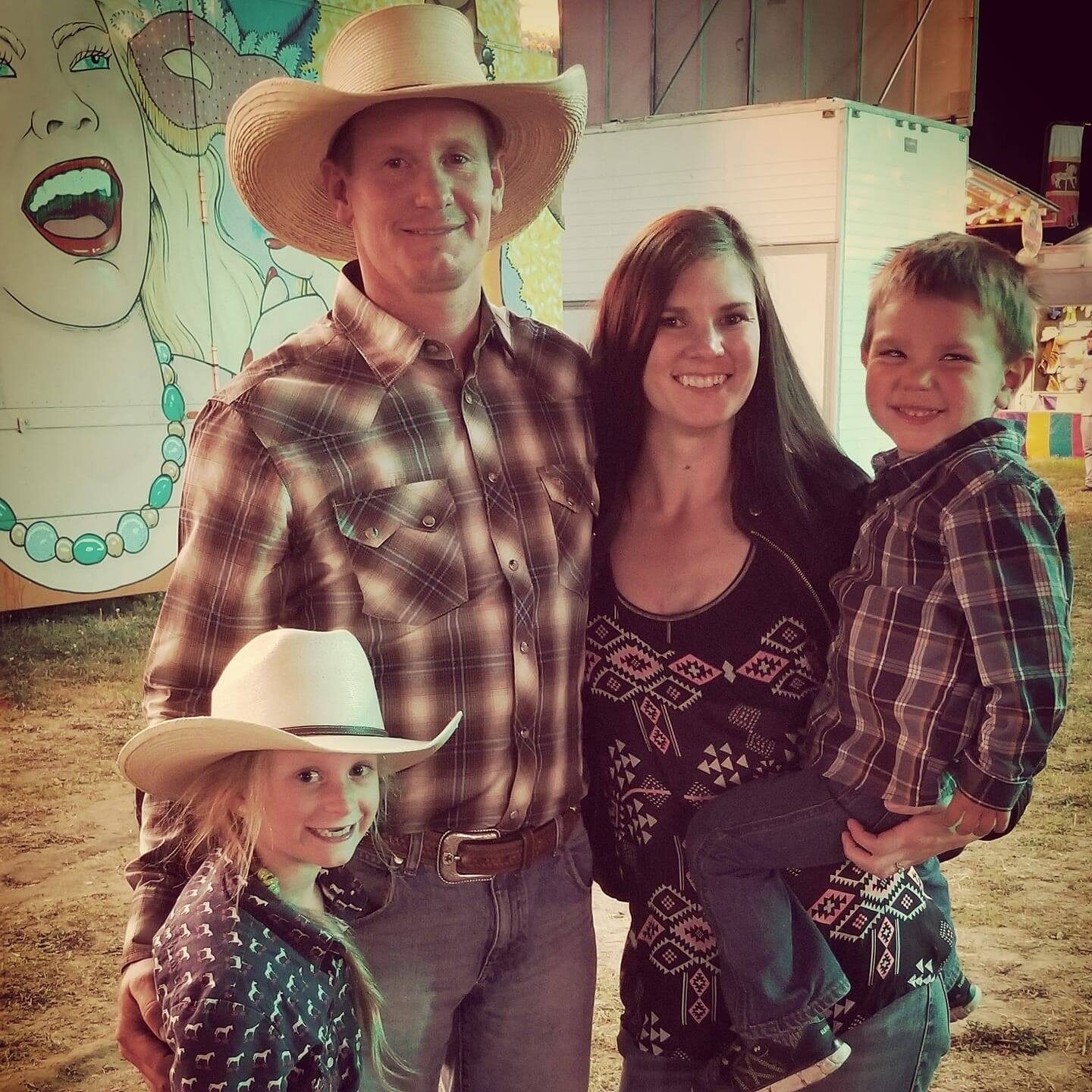
Birney, Montana
“There’s a lot more going on here than just cows.”
That’s saying a lot, because the Diamond Cross Ranch, Birney, Montana, has a lot of cows. And a lot of acres for those cows and a host of wildlife to live on.
“It’s a fairly recent purchase for the owner,” according to Lane Larsen, the ranch’s general manager. In all, the operation covers 122,000 acres in southern Montana, just across the border from Sheridan, Wyoming, about 94,000 of which are deeded. Depending on many factors, drought being large among them, those acres are home to more than 1,000 Angus cows. The land ranges from 1,000 acres of irrigated hay up into steep pine bluffs, Larsen says.
Building a Healthy Ecosystem with Regenerative Ranching
Then there’s the wildlife, which figure large in the management of the ranch. The ranch is home to big game such as elk, deer, black bear, wild turkeys, “anything that you can really imagine,” he says, including a vast array of non-game wildlife that indicate a healthy, functioning ecosystem.
Like beavers. “We’re building 13 miles of artificial beaver dams and restoring stream channels and alluvial valleys,” Larsen says. Those artificial beaver dams are the genesis of a longer-term goal of restoring soil and ecosystem health.
Most of the water from snowmelt or heavy spring rains rushes down the stream channels on the ranch. “It’s dirty water going into the Tongue River,” Larsen says. “That’s not good for the biology in the rivers, whether it’s fish or whatever it might be.”
It’s also not good for the biology on the Diamond Cross Ranch. Looking at things from a regenerative perspective, Larsen says the goal for the ranch is to build soil health, which in turn builds the health of everything that lives above ground.
“If we can retain the water on the Diamond Cross and refill some of the alluvial valley aquifers and raise the water table, we’ll have more grass, our soil will be healthier, we’re going to have streams. We’re trying to put clean water into the Tongue River and also maintain some water so we can start getting these stream channels to flow.”
And beavers doing what beavers do are the starting point. “When we get to the point where we can start transplanting some beavers, hopefully they’re going to be the workforce and restore the habitat,” he says. “So the point of the beaver dams is the health of the land.”
Taking a longer-term view, he says the beavers may well become drought insurance agents. “It might not be in our lifetimes, but if the stream channels run all year long, then we have a better chance of becoming drought resistant.”
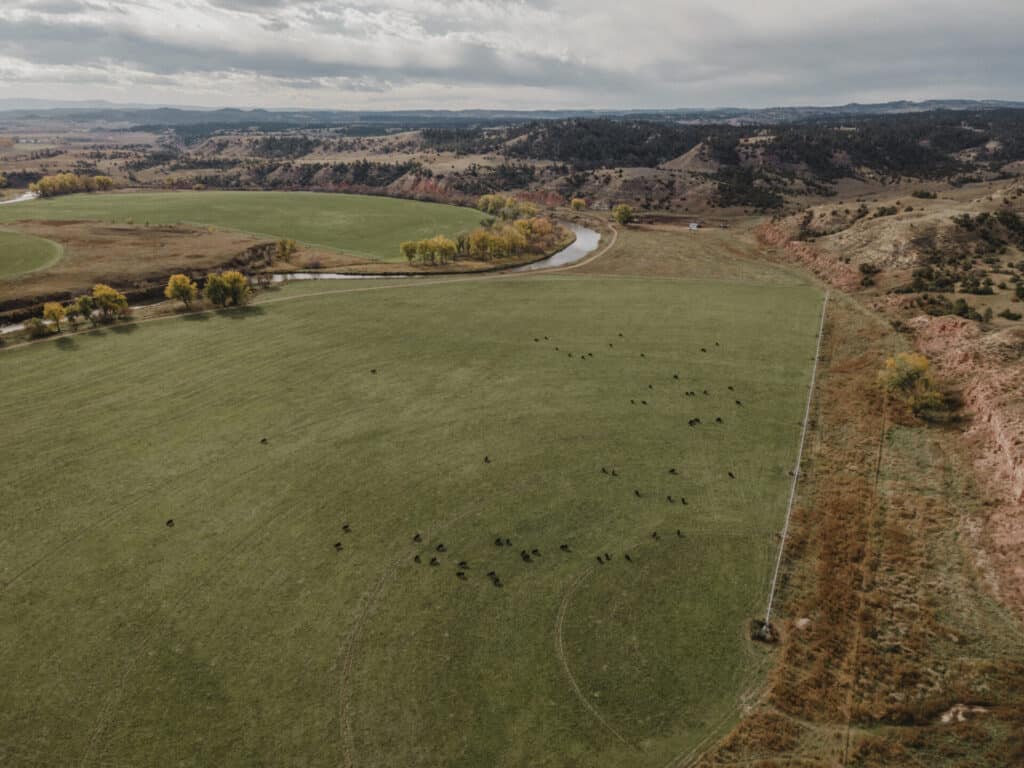
Then There’s The Cattle
The cattle play a role in building soil health and improving the ecosystem as well. “I don’t graze the same pasture every year,” Larsen explains. “I’ll graze a pasture, then give it 12-18 months of rest, and then come back and graze it again.”
Usually, the cattle will rotate through a pasture twice during the year it is grazed. And while it will be grazed intensely, overgrazing is minimized. “That’s from a soil-building and water retention standpoint,” he says. The plants will respond to the intense grazing by growing back stronger, aided by the manure and urine the cattle left behind. “I want diverse grass species, and a lot of it,” he emphasizes.
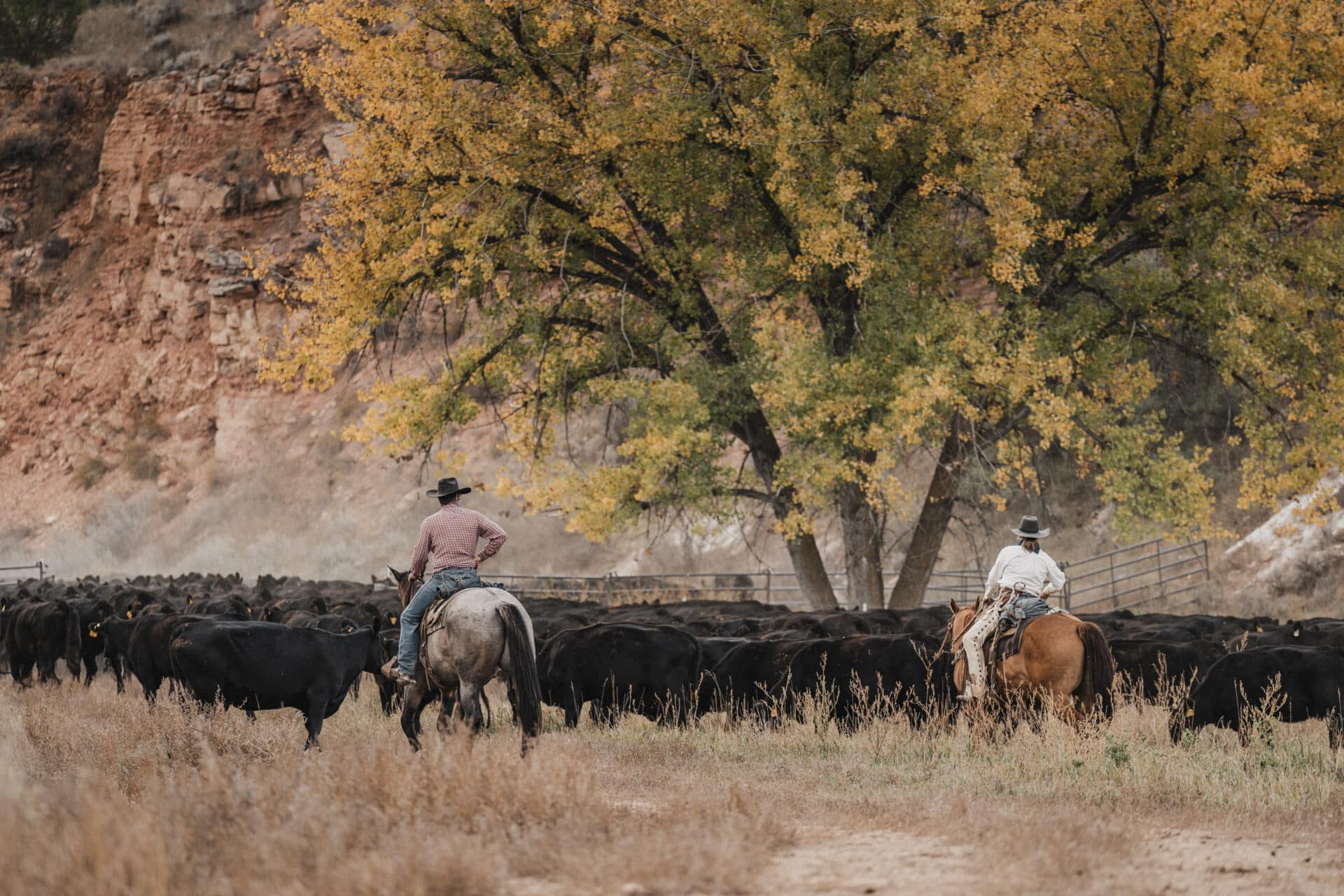
The years 2019, 2020, and 2021 were tough drought years. “2022 was OK. 2023 was an absolute hero,” Larsen says. With the blessing of moisture that 2023 brought, the land is responding. That might be a signal to ramp up cattle numbers. Larsen, however, takes a longer-term view. “Only half the ranch is getting grazed. So if we end up having a drought, I know I’ve got grass to go for at least a year.”
>> LEARN MORE ABOUT GRAZING MANAGEMENT IN A DROUGHT <<
That sort of sustainable thinking permeates the management philosophy on the Diamond Cross. Breeding season runs for 45 days, starting July 5th when the bulls are turned out with the cows. Calving doesn’t start until April 15th when the snow storms are hopefully behind them and they are out to pasture with the cows. Breeding season for the first-calf heifers starts a month earlier, on June 5th. The cows are gathered in June for branding and head to summer pastures. The calves are sorted off the cows in mid-October.
Most of the steer calves are sold on Superior Livestock’s video auction to a handful of repeat buyers who have been snatching up the offerings for the past 10 years. The heifers are sorted and the bottom 20 percent join their steer mates.
The replacement candidates are turned out on the irrigated hay meadows. “We do a consistent move with those all the way through winter, grazing on the meadows. Then they go to some rougher country to breed the next year where the grass is a little hardier and they can build some muscle,” Larsen says. “We push them, that way the bad ones filter out and the pregnant ones stay here.”
In addition, the ranch produces grass-fed and grass-finished beef. “We send a couple hundred out to Oregon and we work with Carmen Ranch,” he says. The Wallowa, Oregon, operation sells high quality grass-finished beef to restaurants, grocery stores and direct to consumers in the Portland and Seattle areas.
Winter weather on the Diamond Cross can vary, from reasonably warm to snow and 20 below. After the calves are sorted off the cows and shipped, the cows go back out to graze winter pasture until the snow gets too deep or it gets cold enough for water to freeze in the extensive pipeline system that brings water to every pasture.
Then, around January 15, the cows head to the meadows where they’re fed hay and Riomax for 70 to 90 days or so before heading out to begin the circle of life for the next year.
Riomax is a Game Changer
Larsen tried loose mineral from several different companies and tubs from several different companies but never found any that performed the way he expected. Then he tried Riomax in 2019. And like many other ranchers who switched to Riomax, all it took was a look over the fence.
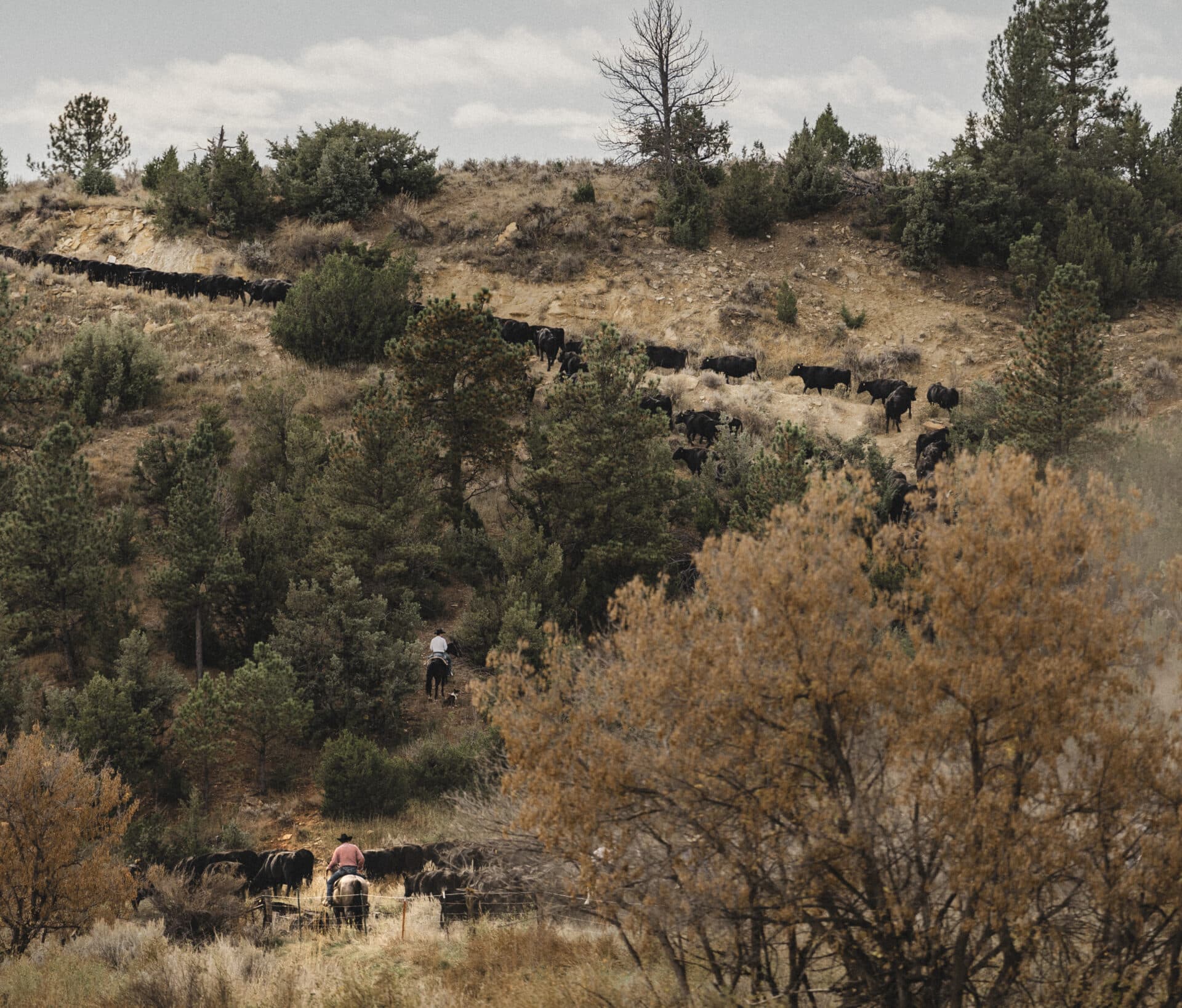
“I went to another herd and looked at the Riomax.” What impressed him was the manure pats with very few grass stems present. Grass stems in the manure from Diamond Cross cattle were 2 to 3 inches long. Grass stems in the manure he saw from the cattle on Riomax, if they were present at all, were only a quarter to a half-inch long.
> CHECK OUT OUR MANURE STUDY AND WATCH THE VIDEO <<
He’s seeing the same thing on the Diamond Cross. “The cattle are utilizing the feed better and we’re feeding less hay,” he says. “We went from 38 pounds a head a day to 30 pounds through the dead of winter. I’m feeding later. I’m going out to pasture earlier and I’m feeding less hay. I would say that we probably feed between $70,000 and $100,000 less feed in the winter. It’s a game changer.”
He says the sticker price was tough to swallow but he’s glad he made the switch. “I think the cows are eating less grass but getting more from it. I see them laying down a lot more during the midday. They’re happy. They’re content.”
So are the calves. “Herd health is probably the biggest driver for us, and then weaning weights” he says. Both of those factors saw a boost when the orange Riomax tubs were present. “Herd health has been great. The way the calves look, they’re just uniform and their coats are shining. We haven’t had a buyer call us back and say, ‘I don’t like the program you guys are on.’ They say, ‘Are you selling more calves?’”
The wet years of 2022 and 2023 saw the grass respond. That, along with Riomax, resulted in a 38-pound increase in weaning weights, the heaviest calves ever shipped off the Diamond Cross. He attributes that to Riomax and pasture conditions working together. “I think that utilizing every nutrient in the grass and utilizing it better is what helped out.”
Beyond that, he appreciates the customer service. “We know they’re going to eat 2 ounces to 4 ounces a day and if they eat more than that, the company backs it up. We’ve had to use that and the company came through.” If cattle overconsume Riomax, the company will replace those tubs.
“The benefit for Riomax is the consumption stop,” he says. He sees consumption tick up a little when cattle rotate to a new pasture, but once they settle in, consumption drops back.
“Through calving, through drought, through wet years, they’re eating the mineral and we’re still seeing less feed costs, a healthy herd and improved range conditions. I feel like Riomax is the tub that pays for itself.”




